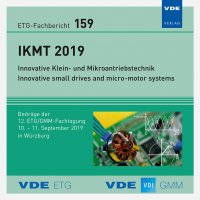Demonstrator of a low-cost active knee orthosis with twisted string actuation
Konferenz: IKMT 2019 – Innovative Klein- und Mikroantriebstechnik - 12. ETG/GMM-Fachtagung
10.09.2019 - 11.09.2019 in Würzburg, Deutschland
Tagungsband: IKMT 2019 – Innovative Klein- und Mikroantriebstechnik
Seiten: 5Sprache: EnglischTyp: PDF
Persönliche VDE-Mitglieder erhalten auf diesen Artikel 10% Rabatt
Autoren:
Muehlbauer, Pia; Janzen, Swantje; Stewart, Kent; Pott, Peter P. (Institut für Medizingerätetechnik, Universität Stuttgart, Germany)
Inhalt:
This paper presents a demonstrative active knee orthosis to support sit-to-stand (STS) transfer movement, which is silent, simply constructed, small, lightweight, and low-cost. The demonstrative active knee orthosis is driven with a twisted string actuator (TSA) fixed to the lateral side of the upper rail. The TSA consists of two polyethylene strands which are twisted along its main axis by a DC motor. Linear guidance rails are used to counteract the motor torque on the load side of the TSA. The resulting helix structure formed in the twisted strings leads to a tensile force along the length of the TSA. At the knee joint, a cam disc converts this force into the desired support moment. Low-cost parts and materials were used when putting the demonstrator together to ensure the overall costs were kept to a minimum. An Arduino microcontroller and a H-bridge circuit provide the motor control, with a user controlled potentiometer specifying the desired speed. The demonstrator is 3D-printed via fused deposition modelling, with scaled down dimensions (scaling factor 0.7) compared to a normal knee orthosis. The costs, size, and noise of the demonstrator are kept low via the use of a simple TSA, replacing the need for heavy and noisy mechanical gear. Due to the simplicity of the system, the total costs are low (106 €), and thus are also expected to be low when creating a full scale version. The demonstrator shows a successful implementation of a TSA driven knee orthosis able to achieve STS-movement while being silent, lightweight and low-cost. Future work will look into improvements of the cam disc’s geometry and motor selection to achieve the desired knee torque profile in relation to the transfer movement. In addition, a full-scale version of the TSA knee orthosis will be constructed.


